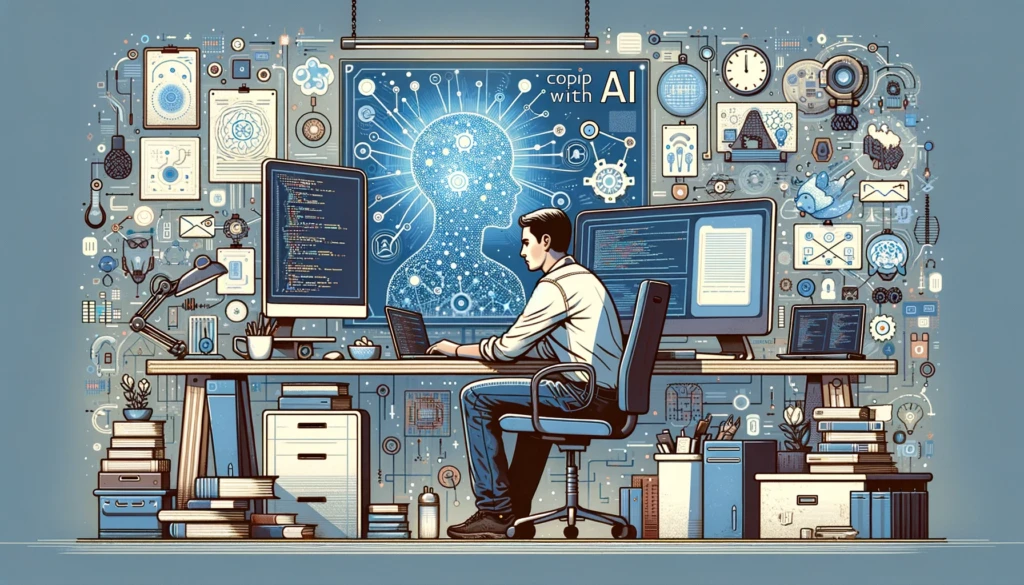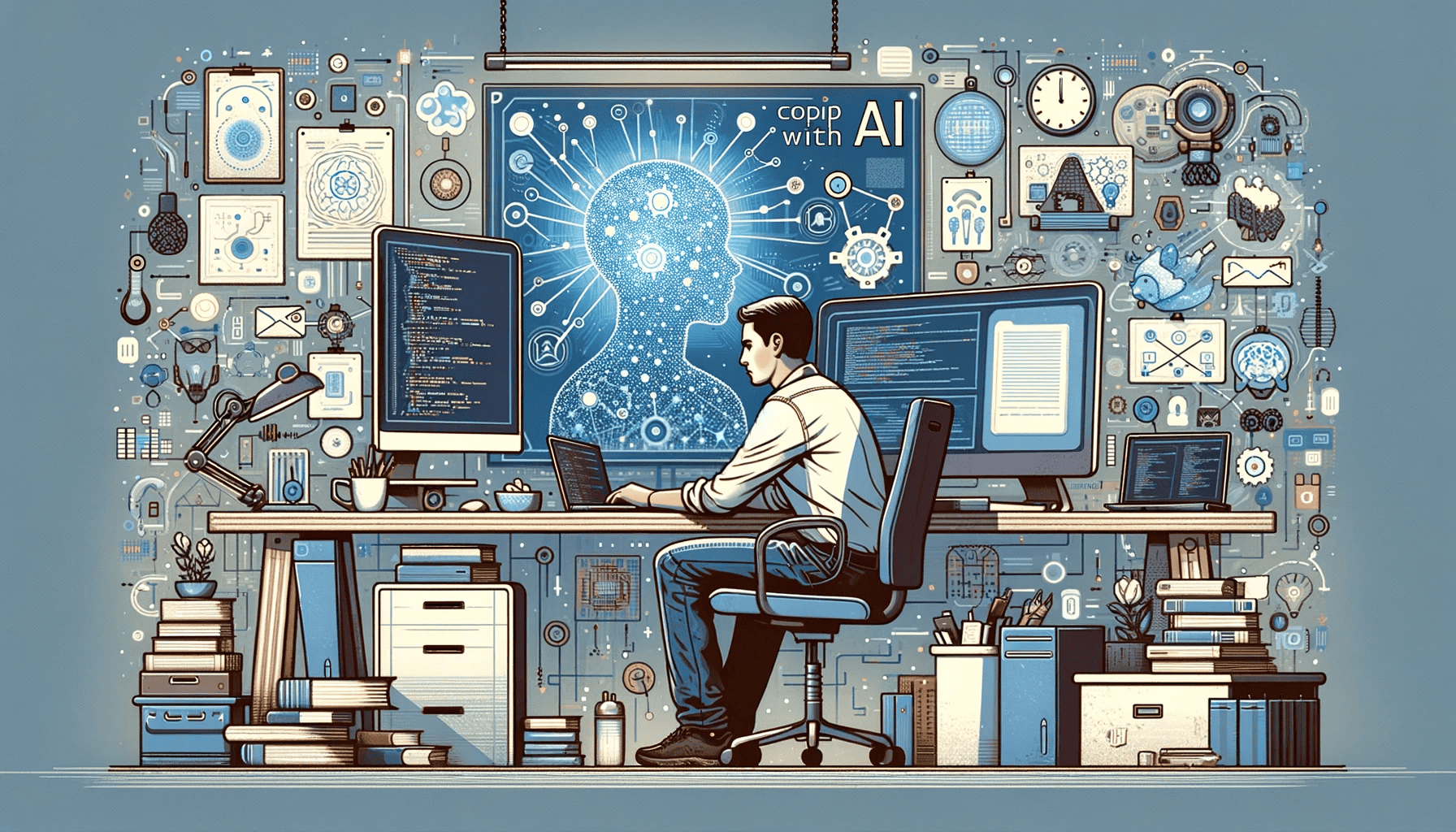Coping with AI: How to Adapt to Constantly Evolving Technology
While the emergence of large language models like ChatGPT has captivated the public imagination, it has made coping with AI, a constantly evolving technology, a real challenge for everyone. These generative AI systems display eerie fluency, mimic human conversational patterns, and seem poised to transform how we work and live, and if we’ll be able to keep our jobs.
But for those trying to implement or compete with rapidly advancing AI, the ground feels like it’s constantly shifting. New capabilities arrive daily, use cases expand relentlessly, and the long-term impacts remain ambiguous. How do we cope with such a fast-moving technology that keeps changing the landscape?
Coping With AI Change By Staying Flexible and Adaptable
Rigidity is lethal in the face of constant change. Organizations and individuals need to stay nimble, ready to update strategies and skill sets on the fly. Like flowing water that navigates around obstacles, flexibility and adaptability allow us to incorporate new developments smoothly rather than getting fractured along the way.
Focus on Fundamentals
While capabilities may change, key human needs and priorities tend to remain stable. No matter how advanced tools become, focus on building strong relationships, delivering value, and acting with integrity. Don’t get so dazzled by novel features that you lose sight of timeless human principles. Keep people at the center.
Learn Aggressively, Implement Selectively
This fast pace of change creates pressure to adopt each new feature immediately. But while constant learning is crucial, be selective about implementation. Thoughtfully evaluate how each innovation aligns with your goals and resources. Apply changes systematically to integrate them sustainably rather than lurching from one trend to the next.
Collaborate with AI Allies
Instead of seeing AI as a threat to compete against, look for opportunities to collaborate. AI excels at computational speed but still struggles with common sense and nuance. Identify where humans can provide an essential complement, creating AI-human partnerships that draw on the strengths of each. Define new roles instead of trying to replicate existing ones.

Plan for Iteration, Not Perfection
With rapid iteration, the first version is rarely perfect. Roll out changes knowing that ongoing adjustments will be required. Build in feedback channels, monitor impact, and refine regularly. Agile thinking recognizes missteps as learning opportunities, not failures. This spirit of iteration allows more room for experimentation and growth.
Focus on Unique Human Strengths
AI may simulate certain cognitive capabilities, but humans have unique emotional, relational, and creative skills. Rather than competing directly, double down on these special strengths like imagination, empathy, and ethics. Create value through areas technology cannot readily replicate. Rediscover timeless human activities like philosophy, art, and spirituality.
Establish Ethical Guardrails
Powerful tools require safeguards to prevent harm, bias, and abuse. Advocate for frameworks, standards, and governance mechanisms to ensure this technology aligns with human values. AI should not progress unchecked but rather reflect ethical priorities. Multistakeholder collaboration is needed to erect the necessary guardrails.
Communicate Complexity Thoughtfully
Generative AI evokes both promise and concern for the public. Communicate nuanced perspectives that acknowledge potential benefits as well as risks. Share concrete use cases instead of sensational hypotheticals. Thought leadership requires sobriety, wisdom, and care for societal impact. Avoid reductive extremes of either utopian boosterism or doomsday alarmism.
Envision Positive Futures
It is easy to fixate on possible negative scenarios. But we also need positive visions to guide innovation toward human flourishing. What could inclusive, empowering uses of AI look like? Engage communities in co-designing desirable futures they wish to proactively work toward. A compelling destination helps align efforts even amidst uncertainty about the path.
Maintain Core Convictions
In turbulent times, connect to your deepest values and convictions. For individuals, this may include cultivating presence, integrity, and lifelong learning. For organizations, reaffirming core purpose and values that transcend tools. Even seismic changes cannot shake foundations rooted in strong ideals that stand the test of time.
Nurture Mental Resilience
The pace of technological change exerts tolls on our cognition and well-being. Make time for reflection, contemplation, and renewal activities to maintain mental resilience. Disconnect from the frenzied news cycle. Nourish your physical, emotional, and spiritual health through life’s inevitable ups and downs. Rediscover wonder in simple joys and stay grounded.
AI will continue rapidly evolving in unpredictable ways, and we will all learn how to be coping with AI. By staying centered, collaborating thoughtfully, focusing on ethics and opportunity, and nourishing resilience, we can navigate these shifting sands.

